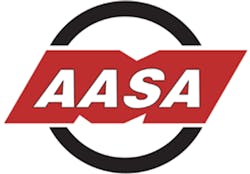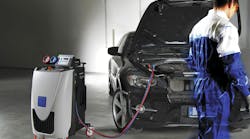The Automotive Aftermarket Supplier Association (AASA) has a new top executive – Paul McCarthy has been named president and chief operating officer. He replaces outgoing president/COO Bill Long, who is now serving as president and CEO of the Motor & Equipment Manufacturers Association (MEMA), AASA’s parent organization.
McCarthy previously served as executive vice president at AASA, as well as senior vice president of MEMA, where he focused on strategy and business planning. Prior to AASA, McCarthy led the automotive and industrial products strategy practice at PricewaterhouseCoopers (PwC, where he consulted with automotive suppliers and eight of the top ten global automakers. He also headed PwC Germany’s Automotive Strategy advisory practice and led global forecasting and analysis for the Autofacts vehicle forecast service.
According to McCarthy, the association will be focused heavily on ensuring vehicle data access and, longer term, to helping members deal with the transformative effect of technology on the industry.
“Data access isn’t just about defending the aftermarket,” McCarthy says. “This is about making sure that consumers have freedom to choose where they get their vehicles maintained and repaired. This is about preserving a free market and a fair market, and preventing monopolistic power. Our consumers will not be able to afford the cost of repairs if we allow monopolies to form around repair and maintenance.”
McCarthy says that, without reliable access to vehicle data by the independent aftermarket, the cost to consumers could rise into the billions. Progress on this front will require some legislative action, including the possibility of revisiting existing Right to Repair laws in light of new technology advancements.
The AASA will also be working to help members prepare for new technology, including vehicle technology and solutions that affect distribution and how the aftermarket interacts with consumers. “We need to help our members handle these changes, and benefit from the changes that we see coming,” McCarthy says. “Consumer expectations are changing when it comes to the type of service they want, and that is good for us, because we are a very entrepreneurial industry. The industry needs to reignite its passion for innovation and collaboration across the value chain.”
Last year, the AASA published its study, “Aftermarket 2025/2030: An Objective Assessment of New Technologies and Opportunities for Growth,” which outlined exactly what some of those changes might be. “We need to help the industry transition from fear of those changes to knowledge and determination,” McCarthy says. “We are seeing this across the industry, where people are looking at the range of possibilities, and figuring out where the opportunities are, and then innovating in ways that can both serve the existing market and take advantage of those new opportunities the technology presents.”
McCarthy also noted that the AASA will continue to take a leading role in working with government entities to address some of the uncertainty created by the current trade war with China, the negotiations around the new North American free trade agreement, and other global economic volatility.
“We need to be smart about how we handle the impact of things like the new tariffs,” McCarthy says. “We have a tremendous advantage, in that we have relatively inelastic demand – when consumers need their car repaired, they have to get it repaired. We have a little more ability to pass on the price increase than other sectors.”
McCarthy says that this may involve cutting costs where it makes sense, and making other adjustments. “We have to be smart, rational players,” McCarthy says. “If we do this right, we can defend our marketplace.”
He adds that MEMA has approved funding to help educate lawmakers about the industry and its importance to the U.S. economy, including conducting fly-ins for face-to-face meetings with legislators, and grass-roots level activity conducted by the membership in their districts. “We need to have a voice in Washington,” McCarthy says. “The supplier community has increased its recognition, and that has helped delay some of the worst potential outcomes of the 232 tariffs. However, this trade reality is probably not going away so we need to make sure we are informed, and that we have a voice in this discussion.”


